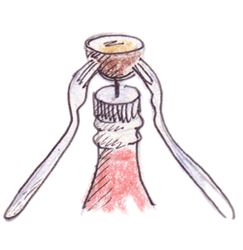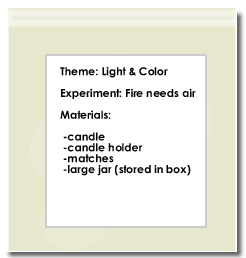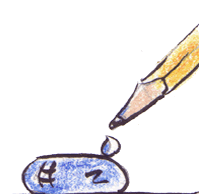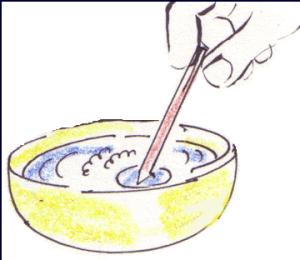Organizing for science experiments in your classroom can be difficult when you already have a busy schedule. It’s tempting to give students only worksheets, dvds and books about science, rather than including actual opportunities for investigations and experiments.
Having weekly experiments, organized in advance, ensures that the students will be enthusiastic about science. Also, provide science materials that the kids can explore and play with in the science center.
Structure science experiments into your schedule

Planning experiments ahead of time is the key to including easy science experiments on a regular basis. Before I was organized in this area, I found myself guiltily thinking, “I should be doing more science experiments” or scrambling to get materials together at the last minute.
If you plan your year by themes, begin by planning one or two easy science experiments per theme. When you plan the following year, add another experiment to your theme and you will soon have plenty of weekly experiments.
Create a science experiment routine
Making an effort to plan the experiments and gather the materials necessary to perform them, ahead of time, makes it easier to schedule a weekly experiment time.
As the year progresses, the children begin to look forward to the weekly experiments. Every Monday, post that week’s experiment on chart paper with a quick illustration and discuss it during group times.
Make easy science experiment kits
Beginning a science experiment with your class, then running around the room looking for materials at the last minute does not work well!
Try this for quick results:
- Obtain large easy zip bags
- Use packing tape and attach a list to the outside of the bag stating:
- The theme
- The name of the experiment
- the materials you will need to conduct the experiment
- Put instructions for the experiment in the bag if you think you will need them
- Store all the bags in a science experiment box (a photocopy paper box works well)
- Keep the box where the students can’t get into it!
I prefer transparent bags to boxes such as shoeboxes, as I can easily see what is in each bag, what materials I need to replace, and also, the bags take less storage space. Students are curious and a science experiment will start them asking questions and wondering about related concepts.
Share the organizational work with fellow educators
 Sharing the organization of science experiments with one or two other primary teachers works well. Begin by having each teacher take two themes and research two science experiments for those themes. Have them print out a supply list and directions as mentioned above, and then buy the materials.
Sharing the organization of science experiments with one or two other primary teachers works well. Begin by having each teacher take two themes and research two science experiments for those themes. Have them print out a supply list and directions as mentioned above, and then buy the materials.
Keep a list of themes and experiments included, taped to the outside of the box and store the science experiment box in one of the teacher’s classroom. Sign out the bag when you need it and replenish the bag before returning it. Repeat the process of creating more bags the following year and you’ll have more experiments to choose from. I have found that repeating the same experiment each year in kindergarten, then again in grade one and two is fine. Students ask more complex questions and try different ways of doing things as they get older.
